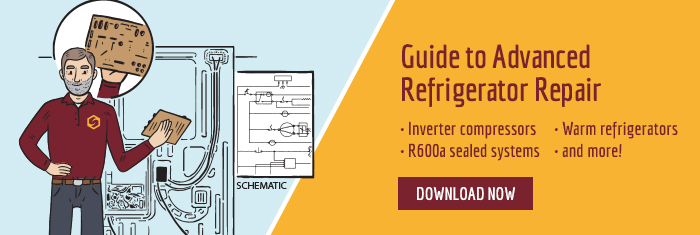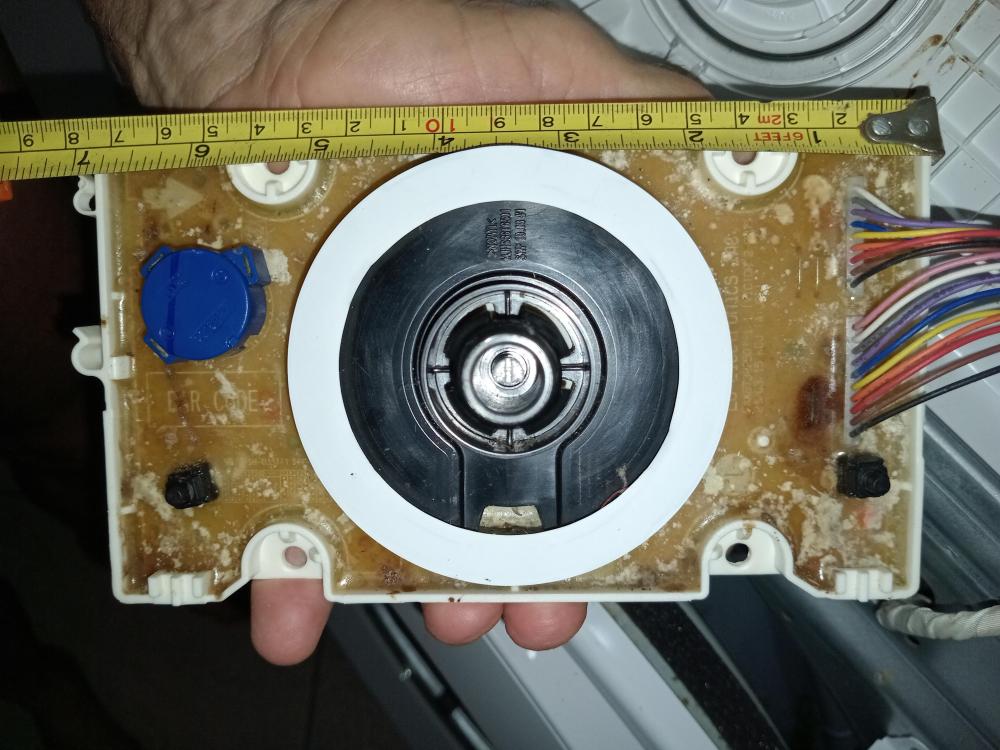FAQs | Repair Videos | Academy | Newsletter | Contact
Search the Community
Showing results for tags 'electronic board'.
-
Two part question: 1. This is machine is sold in Costa Rica and I believe it is made in MX. I read here that the model # can be converted to an American #. Can someone please tell me how to do that? I have been searching for parts for this model and it is as if it doesn't exist. Even LG has ignored my requests. 2. The first problem with the machine began with the knob. I was unable to use it to switch wash modes. It worked for about a year on the standard available cycle. Now the machine just shows 2 dashes on the digital display. Upon opening I see that there seems to be burn marks on the control board behind the knob. I want to begin by replacing that circuit board. Can anyone tell me what is the exact name for that part and which # on the board I need to reference to find a compatible replacement part? It seems as though my only option is an aftermarket part, since LG is unresponsive. Any advice greatly appreciated. The cover on the back reads: INSULATOR PCB MEV47160301 >ABS< SW 18.11 2-2 I also have clearer photos of the visible numbers and print on the board. Thanks!
-
- lg
- washing machine
-
(and 3 more)
Tagged with:
-

Three reasons why doing component replacements on electronic boards is a bad idea
Samurai Appliance Repair Man posted a blog entry in Samurai Appliance Repair Man's Blog
A recent topic in the tech forums here at Appliantology illustrates perfectly a point I’ve made in the past that replacing components on electronic control boards, rather than replacing the whole board, is a bad idea both for the customer and for the technician. The discussion was about a power supply problem on the main control board in a Kitchenaid KSCS25INSS refrigerator which is NLA. This topic pointed out three specific reasons why replacing components on electronic control boards is in neither the customer’s nor the technician’s best interest In this case, we’re not talking about merely re-soldering a burnt solder connection (which I do often). We’re talking about identifying a visibly damaged component, such as a bulging electrolytic capacitor, spending time to source the replacement component(s), unsoldering the old component(s) and soldering in the new ones. Some techs see this component replacement on electronic boards as the new cash cow. I hope to disabuse you of this notion as well and show you how you are actually losing money when you do this. In this particular case, there is a tech bulletin out about a service kit Whirlpool has released for the replacement board (PN W10823804). As one of the techs, @Rob Fowler, pointed out: In this one statement, Rob neatly points out the three reasons why it is not a good idea to do component replacement on electronic control boards. Let’s break it down: 1. You lose the markup on the replacement kit. A replacement capacitor costs maybe $0.23 or so. How much markup can you charge for a replacement cap? $1.00, maybe? How much can you charge for the entire repair? Service call plus skill fee, maybe $175? On the other hand, the service kit retails for over $350 and the completed job can easily sell for $600. Loser: Technician. 2. The customer misses out the latest engineering improvements in the service kit. Depending on the specific board and service kit in other situations, this may also include upgraded software on the board. The customer gets a much better repair with the latest hardware and software. If all you do is a bandaid repair by replacing a bulged cap, they get neither. In the case of refrigerators, you’re talking about better food preservation, user operability, and reduced chances of food loss. Loser: Customer. 3. The service kit is recommended and supported by the factory; the field repair is not. This means that if there’s a problem with the new service kit during the warranty period (usually a year), the factory will cover it. Both the customer and the technician are protected. Otherwise, the customer is paying for an inferior repair that you, as the tech, are on the hook for. Loser: Customer and technician. Replacing components on electronic control boards sounds sexy to some techs because electronics are mysterious to most of them. Maybe it gives them a sense of knowing more than they actually do. But at the end of the day, it’s the same old Parts Changing Monkey (PCM) game that so many techs today like to play. Replacing a visibly damaged component on an electronic board does not require any troubleshooting skills-- just unsolder the old one and solder in the new one. No complicated schematics and specifications to deal with. No need to understand the technology being used on modern, computer-controlled appliances. Just plug n' chug. In addition to all the foregoing, consider the time spent researching the needed components to buy, placing the order, storing and stocking the parts--- they’re chasing pennies and losing dollars. Learning how to troubleshoot electric circuits is the high income but difficult skill to acquire because you need to learn Ohm's Law, basic circuits, and a disciplined mental troubleshooting approach to problem solving. Low skill techs would rather replace an obviously damaged part than troubleshoot an invisible problem any day. But, as a general rule: high skill = high income. This situation also illustrates the value of being an active tech member at Appliantology and asking the right question when faced with a failed NLA board situation. Instead of asking, “Which component on the board should I replace?” ask, “Is there a service kit available for this board?” You may be asking, "Are there situations where component replacement on boards make sense for both the customer and the technician?" In situations where the board is NLA and there is no service kit available, the answer is another question: what’s your time worth? If you’re slow and you service mostly low-end appliances, maybe you have more time than money. If you’re busy and your business is focused on high-end appliances, you probably don’t have time to waste playing trivial pursuit and replacing caps on boards— too much money to make on the next job. One last thing I want to mention is that we have various contacts with manufacturers and know that they do not like techs doing component replacements on control boards, mostly for Reason 2 listed above. Some techs have a hostile attitude toward manufacturers. I’ve heard techs say juvenile things like, “We have to beat the manufacturers at their own game.” This is an asinine statement and if you listen to such petty-minded people, you will end up playing a chump-change parts changing game and never realize your full potential as a tech. Some manufacturers are aware they need to do a better job communicating with non-warranty techs. This is going to happen and has already started (announcement coming soon-- stay tuned). Some of this is being driven by Right to Repair laws. Meanwhile, your time is better spent improving your troubleshooting skills. Learn how to price your services according to your actual cost of doing business, not what seems “fair.” Finally, set your sights higher than PCM repairs, focusing on high-end and more complicated appliances that require higher skills to repair-- this is the single best way to increase your average repair ticket.- 10 comments
-
- 7
-
.png)
-

-
- pcm
- electronic board
-
(and 1 more)
Tagged with:




